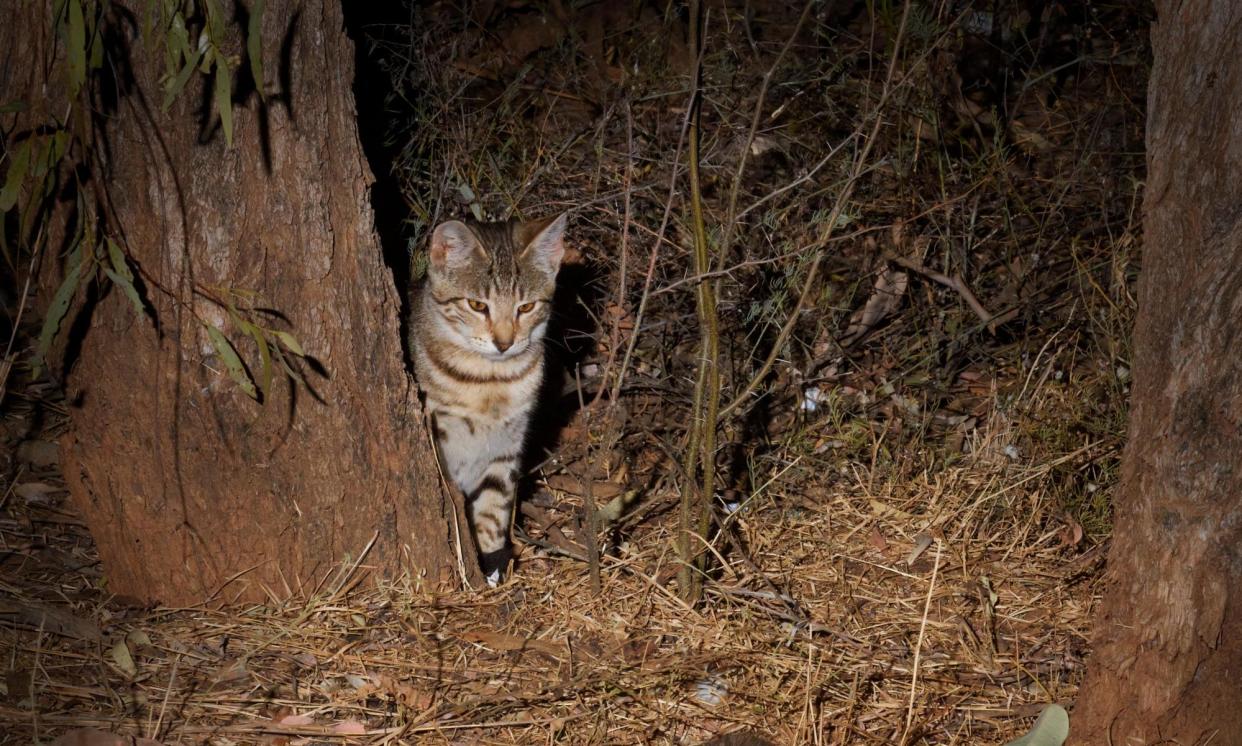‘Like the devil on meth’: New Zealand feral cat killing competition produces record haul

A controversial competition that allows children to hunt feral cats in rural New Zealand for cash prizes has produced its biggest haul yet, with roughly 340 animals killed – about 100 more than last year’s event.
The annual North Canterbury fundraising event, which wrapped up this weekend, is open to children and adult participants and targets deer, pigs, ducks, possums and rabbits.
In 2023, it introduced feral cats to its suite of other hunting categories, prompting furious backlash from animal rights activists.
Event organiser Matt Bailey said the feline category was created to help manage feral cats, which threaten native wildlife and carry diseases that put farmers’ livestock at risk. A NZ$500 cash prize is awarded to the hunter with the largest number of cats killed, while the largest cat caught is awarded $1,000.
Feral and domestic cats are a serious threat to New Zealand’s biodiversity and native wildlife. The predators hunt endangered native birds and eggs, lizards, bats and insects. But the issue of their control ignites furious debate in New Zealand, which has one of the world’s highest rates for cat ownership per capita, with close to half of households owning one. Conservation groups regularly call for feral cats to be added to one of the world’s most ambitious pest-eradication regimes, which aims to eliminate all possums, rats, stoats and ferrets by 2050.
Just over 1,500 people took part in the North Canterbury event this year, with roughly 440 of those under 14 years old.
Animal rights activists have condemned the competition, arguing it is cruel to animals, desensitises children to violence and puts domestic cats at risk.
Animal Save Movement protesters attended the event, where they said they were quickly approached by young people dressed in animal costumes with the words ‘Animal Slay Movement’ printed on them.
The group criticised the event’s attempt to justify violence towards animals by claiming it was conservation.
“There is nothing conservative about encouraging children to kill animals and people attempting to throw dead possums at us,” said Sarah Jackson, who attended the protest.
Bailey said he is “not too worried about people who don’t understand, and not too worried about their feelings.”
Children in the rural region grow up in an environment where animals are hunted, skinned, processed and eaten, Bailey said. “It’s usual rural life.”
There are safeguards in place to ensure domestic cats are not targeted and cats are humanely killed, he said. Feral cats must be trapped first to ensure they can be identified as feral, and must then be killed using a minimum of a .22 rifle. Hunting is restricted to areas outside any residential areas, with traps set a minimum of 10km away. Bailey said it is easy to differentiate between feral and domestic cats.
“When [ferals] are caged, it’s pretty obvious – they are like the devil on methamphetamine, they will try to attack you.”
This year, the general competition raised roughly $60,000 for a local school and community pool, meanwhile venison from the deer hunt has been processed and frozen to donate to food banks.
The hunters and animal rights groups share one area of common ground: calling for more emphasis on responsible cat ownership.
The Animal Justice Party said alternative methods to managing cat populations should be investigated, including trap-to-neuter programmes.
“If we genuinely care about bird conservation and wildlife protection, we need individuals to take responsibility for their cats by neutering to prevent unplanned breeding and the subsequent dumping of unwanted litters,” it said.
Bailey believes a law change is needed to ensure cats are microchipped and desexed.
“They are an apex predator – the time’s come that if we want to be predator-free, we need to stem the flow of people breeding [cats] and dumping in the countryside.”

 Yahoo News
Yahoo News 
